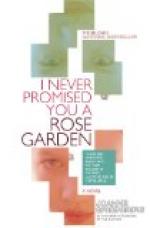Your declaration that henceforth one garden is not enough for your ambition, but that you crave several, amuses me greatly. For a mere novice I must say that you are making strides in seven-league horticultural boots, wherein you have arrived at the heart of the matter, viz.:—one may grow many beautiful and satisfactory flowers in a mixed garden such as falls to the lot of the average woman sufficiently lucky to own a garden at all, but to develop the best possibilities of any one family, like the rose, carnation, or lily, that is a bit whimsical about food and lodging, each one must have a garden of its own, so to speak, which, for the amateur, may be made to read as a special bed in a special location, and not necessarily a vast area.
This need is always recognized in the English garden books, and the chapter headings, The Rose Garden,—Hardy Garden,—Wall Garden,—Lily Garden,—Alpine Garden, etc., lead one at first sight to think that it is a great estate alone that can be so treated; but it is merely a horticultural protest, born of long experience, against mixing races to their mutual hurt, and this precaution, together with the climate, makes of all England a gardener’s paradise!
What you say of the expansiveness of the list of fragrant flowers and leaves is also true, for taken in the literal sense there are really few plants without an individual odour of some sort in bark, leaf, or flower usually sufficient to identify them. In a recent book giving what purports to be a list of fragrant flowers and leaves, the chrysanthemum is included, as it gives out an aromatic perfume from its leaves! This is true, but so also does the garden marigold, and yet we should not include either among fragrant leaves in the real sense.
Hence to make the right selection of plants for the bed of sweet odours it is best, as in the case of choosing annuals, to adhere to a few tried and true worthies.
But at your rhapsody on the bed of carnations, I am also tempted to launch forth in praise of all pinks in general and the annual flowering garden carnation, early Marguerite, and picotee varieties in particular, especially when I think what results might be had from the same bits of ground that are often left to be overrun with straggling and unworthy annuals. For to have pinks to cut for the house, pinks for colour masses out-of-doors, and pinks to give away, is but a matter of understanding, a little patience, and the possession of a cold pit (which is but a deeper sort of frame like that used for a hotbed and sunken in the ground) against a sunny wall, for the safe wintering of a few of the tenderer species.
In touching upon this numerous family, second only to the rose in importance, the embarrassment is, where to begin. Is a carnation a pink, or a pink a carnation? I have often been asked. You may settle that as you please, since the family name of all, even the bearded Sweet-William, is Dianthus, the decisive title of Linnaeus, a word from the Greek meaning “flower of Jove,” while the highly scented species and varieties of the more or less pungent clove breath remain under the old subtitle—Caryophyllus.




